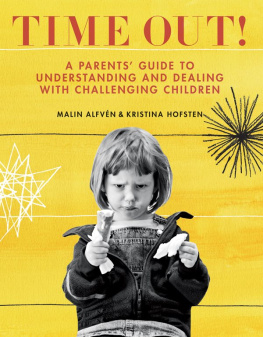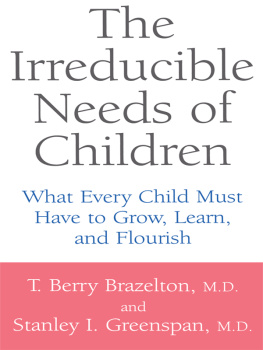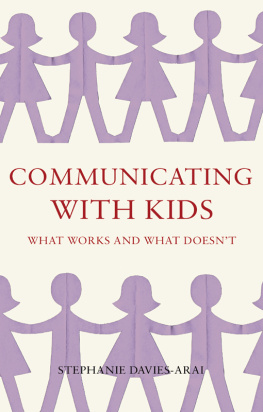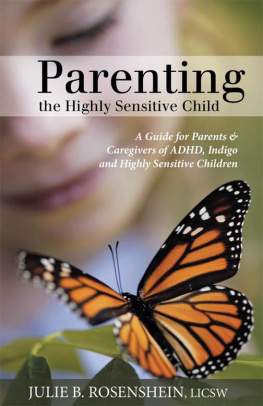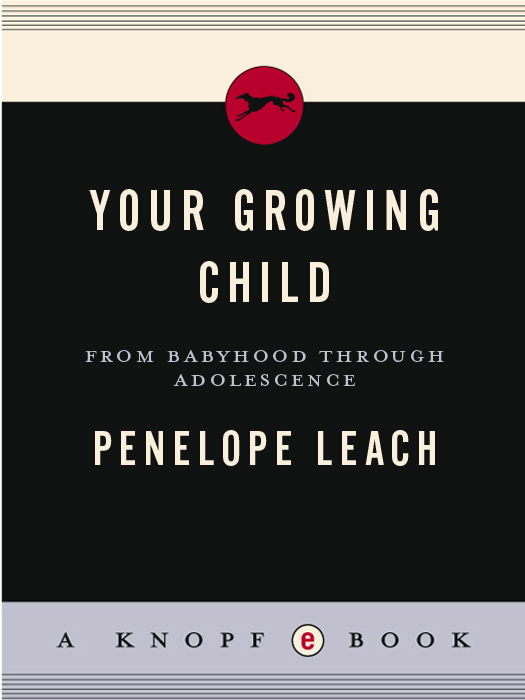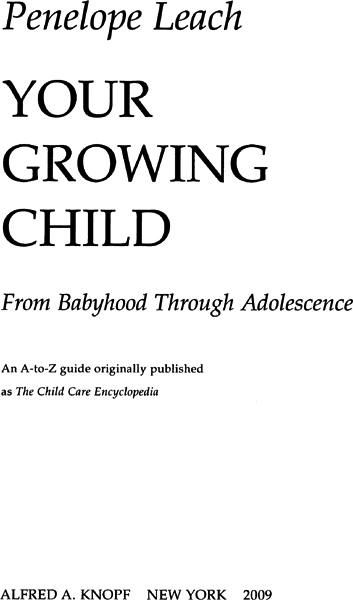To the doctors, nurses and supporting staff of the James Wigg Practice, Kentish Town Health Centre, who make parent / professional teamwork in child care a daily reality rather than just an ideal.
This book touches on many matters which fall within the province of the general practitioner. I have naturally been concerned that information and advice concerning diagnosis and treatment should be not only accurate in content but also acceptable in tone to members of the medical profession. I am therefore extremely grateful to Dr. Michael Modell, FRCGP, MRCP, DCH, and to Dr. Alia Antoon, DCH , for their kindness, time and care in reading and commenting on the relevant portions of the manuscript.
I must stress, however, that responsibility for the opinions and interpretations presented here remains my own.
Penelope Leach
1983
Contents
What this book is for and how to use it
Since the publication of Your Baby and Child many kind users have written to ask for something similar which deals with older children as well. At first I thought the commission was impossible because as children grow older more and more of their important experiences are linked not to home and parents but to school, community and friends. Every person, every family and every environment is not only unique in itself but unique in its combinations and effects, so that to write about eleven-year-olds as if they were all the same is even dicier than generalizing about toddlers.
But as the letters went on arriving I began to see that while all the people in families are, of course, unique, the issues which concern them are not. Despite the vast differences between a single-parent family and a partnership, both have to serve meals, cope with measles, choose schools and make decisions about when to call the doctor. A family with just one six-month-old baby faces different risks from a family with three schoolchildren. Yet both must give thought to their childrens safety and cope with any accidents that do occur. Money, employment, housing and the availability of relations and friends all affect family life. But both the most and the least privileged families have to decide how to allocate among their various members whatever resources are available. Finally, however much one family may differ from another, parents all share one overriding concern: we want our children to be healthy and happy. We all strive to keep them so and when things go wrong we want to be sure that we have thought of everything that might improve the situation. Every baby, toddler, child and adolescent is a unique person, yet each has to follow the same broad and winding path from birth to maturity. Every parent is a unique person, too, yet each will meet some of a range of similar experiences and issues, problems and pleasures, as his or her children grow. This book does not therefore try to follow a typical or average child through all the years he or she spends within the family but rather tries to pool those common experiences and concerns and set out those issues and problems so that individual parents can use them in their own thinking and coping, in any way which fits their particular circumstances.
Your Growing Child is designed to be used in two different ways, which are reflected in its double reference system.
The book is designed to give you information and guidance with immediate problems, large and small. The comprehensive index at the back takes you straight to the topic you want, whether it is advice on handling a burn or head injury, comfort for an adolescent stricken with acne, suggestions about what to look for on your visit to a pre-school group or an explanation for a childs .
The book is also designed to contribute to the kinds of thinking and family discussion which will help you to avoid problems, or at least foresee them. I hope that you will look up the bigger topics of child care, education and family living whenever they seem interesting to you rather than only when you are frantic. To help you do this, all the entries are arranged alphabetically so that you can turn directly to , and use the headings at the top of each page to help you browse and see what is there.
later on.
Every child has to learn to behave, at each successive age-stage, in ways that his or her parents, teachers and friends find acceptable. Dont wait until your child is accused of bullying or theft, or stays out until 2 a.m. for the third night in a row, to look at . It raises issues which need thinking and talking about from the beginning to the end of childhood.
Hopefully there will be many periods when there are no particular problems in your family. You may still find that entries like Play are useful and fun; that helps you to think ahead and make good policy decisions about keeping your children safe from sexual abuse, traffic accidents or drowning.
Whether you are using it for reference or for reading. Your Growing Child is aimed at supporting you while you support your childrens growth from wherever they are now toward healthy, happy adulthood. It comes to you as a greeting from the many thousands of parents from all over the United States who, knowingly or unknowingly, have contributed to its content. I thank them all.
Abdominal pain (or stomachache or tummyache as your child may call it) may be your first warning of a real emergency or it may mean nothing important at all. Experience as a parent and knowledge of your own child will help you to draw the fine line between unnecessary midnight calls on your doctor and neglect of the pain which does turn out to be due to appendicitis. In the meantime, or with any child who is not your own, play safe. The abdominal cavity runs from the chest (from which it is separated by the muscular wall called the diaphragm) to the pelvis. It contains all the organs concerned with digestion and excretion, not just the stomach but also the liver, gallbladder, pancreas, spleen, kidneys and bladder. It contains yards and yards of large and small intestine and, in females, it contains the uterus (womb), ovaries and fallopian tubes. With so many vital organs and processes grouped together it is often difficult for the victim to say exactly where the pain is and impossible for anyone but a skilled doctor to judge whether or not something is seriously amiss. You certainly need medical advice if:
Abdominal pain is accompanied by other signs of illness such as fever, loss of appetite/energy/interest, poor color, vomiting and/or diarrhea.
Pain is the only symptom but is severe enough to take the childs whole attention so that she cannot play, watch television, listen to or read a book.
Pain, even if less severe, lasts for more than a few hours at a level which keeps interrupting the childs activities; although she tries to go on with her ordinary life she cannot do so for more than a few minutes at a time.
When you have to assess abdominal pain in your child, dont let your judgment be swayed by old wives tales. For example, eating underripe fruit or too much ice cream, eating too fast or drinking while eating are not likely causes for the pain. If a child has eaten so unwisely that she really does make herself sick she certainly needs a doctor rather than cries of I told you so . It is more likely that she is suffering from some form of food poisoning than from sheer gluttony. Chills in the stomach and colds in the kidneys are folk ailments rather than real diagnoses, while ordinary constipation does not cause pain.



